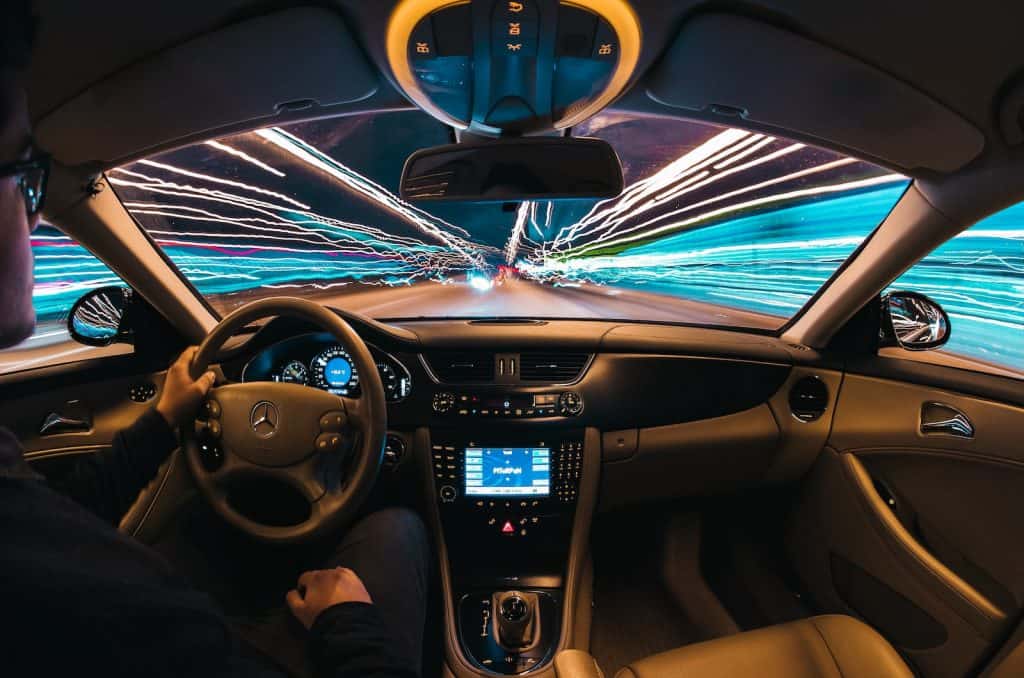Learn about the remarkable innovations of IoT in the automotive industry:
The driving force behind the concept of the Internet of Things (IoT) is at its peak. This is because of the influence and ability the technology continues to demonstrate in different fields. IoT is a unique system that enables the cooperation of objects and human interactions to form new applications.
With the help of wired and wireless connections, this remarkable technology allows various objects in an environment to connect. The automotive industry is one field that benefits from IoT.
IoT in the automotive industry plays a significant role both in industry development and in redefining on-field operations. For example, the IoT-based tools enable your vehicle to call 911 if you fail to respond to some advice or recommendations from the cloud server.
The Current Trend in the Automotive Industry
The automotive sector remains to be one of the biggest manufacturing industries worldwide. Its annual production based on an international estimation is now at slightly under 70 million units. In 2017, the automotive industry’s global revenue was at 3 trillion dollars. This amounted to a total global GDP of 3.65%.
The only worrying trend is that; from 2017 to the present, the total yearly sales in automotive units have reduced.
Global automobile sales were projected to fall somewhat below 70 million units in 2021. Surprisingly, this happens to be the present state, with a reduction from a peak of about 80 million units in 2017.
One reason for the stagnating automotive industry’s annual turnover is the lack of innovative vehicle features. Clearly, the present buyer is looking for astounding automotive elements.
Some want more than four tires in a car. Others also seek an advanced vehicle that they can be able to connect and interact with more than the current vehicle types. The IoT is one technology that is helping the automotive sector formulate next-generation vehicles.
Car manufacturers that have not yet embraced such impressive automotive technologies are witnessing significant drops in sales volumes. Therefore, it’s high time that car manufacturers look into embracing such essential trends. Car dealerships are taking full use of IOT to enhance the experience they give back to their customers.
If you ever want to find out more, you can always search for “Toyota dealership near me”. This will direct you to the nearest Toyota dealership and they’ll tell you that IoT is so beneficial in their business.
Take an example of emergency roadside hitches in any of their vehicles; the free phone set up enables drivers to receive an almost immediate rescue.
The car dealership has created a network consisting of 17,000 plus roadside assistance providers to ensure timely emergency interventions.
The assistance providers will help you out of the expected hitches such as flat tires (as long as you have a spare wheel), dead batteries, running out of fuel, overheating engine, lockouts, or any other form of breakdown. In addition, they will help you out of the road in an emergency at no cost.
If it’s a warrantable issue that they cannot fix on the spot, you don’t have to fret. They’ll ensure that you’re towed, at no charge, to the Alternate Service Location (ASL) or the nearest Kia dealer- Any that’s closer to you.
In the event that you have an applicable warranty-related need, your repairs may be handled under the Kia 10-year/100,000-mile warranty cover.
Still, if your car’s break-down happens on a weekend, or on holiday, They will pull your vehicle and have it stored by a Kia-approved trader. The next business morning, it is taken to the nearest dealer or Alternate Service Location (ASL).
Reasons Why IoT Will Make a Splash in the Automotive Industry
With the current trend, automotive companies can no longer work without the use of IoT. With this remarkable development, the old perceptions of the automotive industry are changing.
The Wi-Fi connectivity enabled by 3G-4G-5G functionality and predictive maintenance are some ways IoT-based solutions are transforming the present automotive age. Other IoT solutions include advanced fleet management and the upcoming autonomous vehicles.
Let’s take a detailed look at how IoT innovations are changing the automotive industry.
Four crucial benefits from IoT innovations
- Benefit From Real-Time Fleet Management
The introduction of IoT in the automotive sector has brought a massive turnover in fleet management. Trucks are getting connected with location tracking, weight measurement, and other essential sensors.
As soon as sensory data is collected from a large fleet, like trucks, it is stored in a cloud application. The data is then processed via different analytical features and developed into a visual setup.
Large fleets will benefit from generating substantial data volumes. The data collection is done via IoT-connected devices. The data is then used for in-depth analytics on application dashboards.
A fleet operator can access the collected and processed information to examine different parameters concerning the fleet.
Besides, advanced software and integrated cloud-based platforms enable fleet operators to track vehicle positions in real-time. They can also offer remote car diagnostics and monitor vehicle routes.
Ways in which a fleet manager benefits from an IoT-enabled fleet management system include:
- You can track the traffic conditions on the road
- Tracking of the weight of cargo that the fleet carries
- Real-time monitoring of the fleet’s location
- Performance measures such as fuel and mileage performance
- Route management
- Time management
- Drivers management
- Accident Reduction With Autonomous Vehicles
The concept of autonomous vehicles is now trending amongst manufacturers. These types of vehicles will take up all the driver’s driving functions to ensure safety on roads.
Statista reveals that in 2019, there were around 31 million vehicles worldwide with some level of automation operation. By 2024, the number is expected to go beyond 54 million.
Semi-autonomous vehicles act as partial drivers. One outstanding feature of such cars, The Lane Departure Warning (LDW), serves as the driver’s second set of eyes on the road. The camera-based system will monitor your vehicle’s position and ensure it’s within its lane.
The feature also helps warn you if the vehicle deviates or is almost deviating from its lane. LDW also alerts you of a lane departure anytime your vehicle travels above a particular speed, yet the turn signal is not on.
Other essential features of such modern vehicles include the Front Seat-Belt Pretensioners and the Driver Attention Warning (DAW). If you experience collisions when driving, the Front Seat-Belt Pretensioners will tighten the seat belts by pulling the driver and other car occupants securely into their seats.
The Pretensioners do this to help reduce the likelihood of injuries if an impact occurs. Besides, the Driver Attention Warning (DAW) system is designed to spot a sleepy or tired driver. It then gives a warning signal for the driver to take a necessary break.
Therefore, vehicles infused with IoT systems reduce drivers’ errors. As a result, they make driving easier and safer. This is an added benefit to drivers who will no longer struggle to control their vehicles.
It’s more promising now that these semi-autonomous vehicles have already been manufactured. They act as partial assistants to drivers in aspects like braking, parking, and lane changing.
IoT-integrated semi-autonomous cars can make timely decisions. In part, they reduce the driver’s load by controlling the vehicle’s operations to avoid accidents. This is now possible with the developed proximity cameras and sensors.
3. Vehicle Protection Using Predictive Maintenance Technology
As a vehicle owner or even a contracted driver, think about when you can enjoy smooth, uninterrupted travels. Can you imagine when you will never experience breakdowns at any point of your journey due to real-time predictions? Well, this is what predictive maintenance technology offers you.
It is an innovation that uses IoT connectivity tools. It helps collect data on the performance of different automotive parts and then transfer the collected data to the cloud in real-time.
It estimates the risks associated with possible malfunctioning of the vehicle’s hardware or software. Once information is processed, the car driver gets informed. He/she is advised on any repair or service needed to prevent possible breakdowns.
The driver receives alerts through their smart mobile devices before any malfunction occurs. This enables the driver to take time-saving and cost-effective steps to avoid car failure amidst driving.
Predictive maintenance enables the end-users to receive the necessary information far in advance. With IoT connectivity tools, you can bid goodbye to the emergency car stops amidst your travels, which are often caused by breakdowns.
This technology is associated with machine learning algorithms. It is effective in monitoring things like battery life.
In summary, here’s what predictive maintenance technology will offer you:
- An in-vehicle monitoring system that assesses your battery status
- The system collects data from the battery, motor starter, and fuel pump.
- Real-time data transfer to a cloud server
- Prediction of possible maintenance issues. For example, the active machine-learning algorithm foretells if the battery is almost running low.
- A system that processes inputs and prepares the right advice for the driver concerning the vehicle’s condition
- A notification system that directs advice to the driver using a connected device. It gives appropriate warnings. An example is when a driver receives an alert about a low battery that needs recharging.
4. Comfortable Driving With IoT-Enabled Updates
With the new inventions, cars are now operating under various software-and data-centric measures. As such, the functions of over-the-air (OTA) software updates and IoT data platforms in automotive manufacturing are necessary.
When using the data platforms, vehicles can receive both map and traffic updates, software upgrades, feature updates, and safety measures.
The IoT-enabled updates for connected cars enhance real-time traffic data services. For example, drivers get to enjoy traffic management and increased navigation accuracy. As a result, millions of drivers will get 3D mapping, flexible map updates, and many other driver assistance features.
The global adoption of the Navigation Data Standard (NDS) for IoT-enabled automotive navigation has set higher regulations. It now forces the original equipment manufacturers (OEMs) and automotive sellers to re-establish their manufacturing formats and standards.
To measure up to this standard, manufacturers and automotive vendors will have to redesign their map production pipelines. They’ll also have to revamp their software development tools. In addition, they should provide over-the-air (OTA) software updates for users to establish new maps remotely.
Conclusion: IoT in the Automotive Industry
The introduction of IoT in the automotive industry opens new platforms for manufacturers and buyers worldwide.
Such an evolution in the automotive industry brings about real change by providing technological services of wired and wireless connections. In addition, the manufacturers also aim at providing real-time data solutions to their users.
Drivers worldwide look forward to operating their vehicles as smartphones. Furthermore, how the consumer spends on in-vehicle connectivity is expected to double up.
IoT already proves to be the most promising innovation in the automotive industry. With the assisted driving and technological updates for cars and other automotive vehicles, we are looking forward to exciting automotive days ahead.

